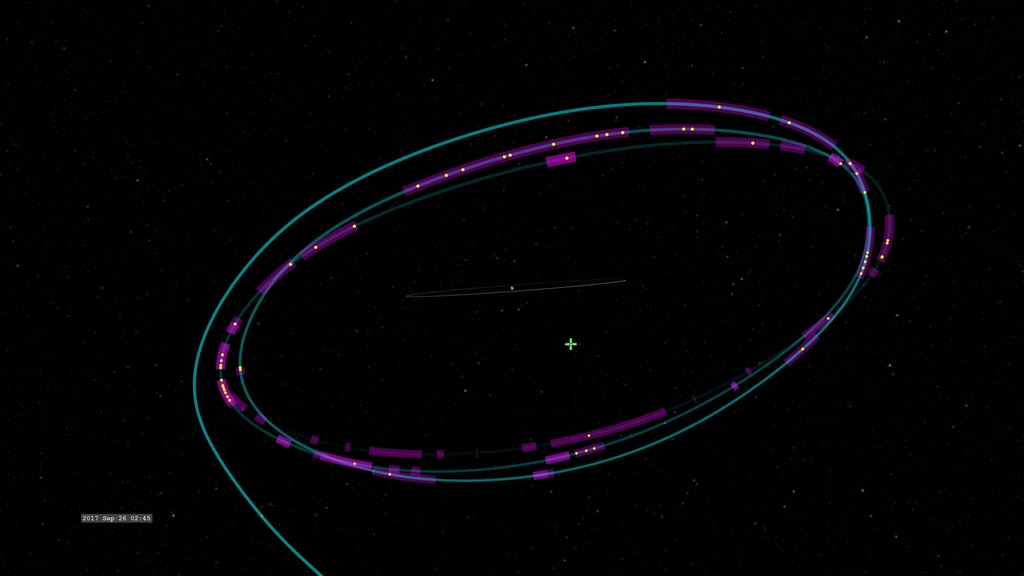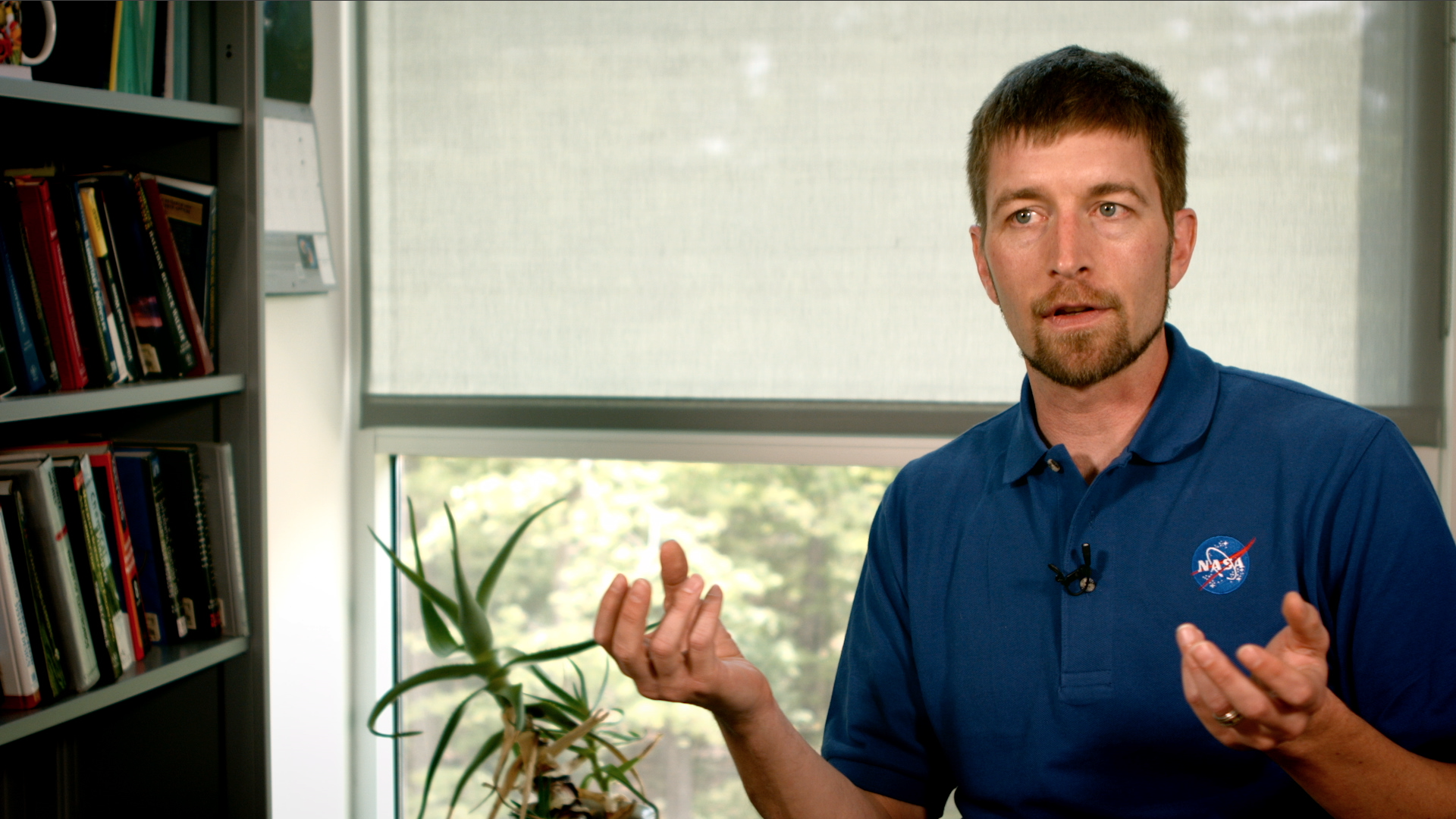NASA Team Explores Using LISA Pathfinder as a 'Comet Crumb' Detector
In a proof-of-concept study, NASA scientists are exploring using the European Space Agency's LISA Pathfinder spacecraft as a micrometeoroid detector. When tiny particles shed by asteroids and comets impact LISA Pathfinder, its thrusters work to quickly counteract any change in the spacecraft's motion. Researchers are monitoring these signals to learn more about the impacting particles.
Credit: NASA's Goddard Space Flight Center
Music: "Electrovoltaic" and "Disks in the Sky" from Killer Tracks.
Watch this video on the NASA Goddard YouTube channel.
Complete transcript available.
LISA Pathfinder, a mission led by the European Space Agency (ESA) with contributions from NASA, has successfully demonstrated critical technologies needed to build a space-based observatory for detecting ripples in space-time called gravitational waves. Now a team of NASA scientists hopes to take advantage of the spacecraft's record-breaking sensitivity to map out the distribution of tiny dust particles shed by asteroids and comets far from Earth.
Most of these particles have masses measured in micrograms, similar to a small grain of sand. But with speeds greater than 22,000 mph (36,000 km/h), even micrometeoroids pack a punch. The new measurements could help refine dust models used by researchers in a variety of studies, from understanding the physics of planet formation to estimating impact risks for current and future spacecraft.
The mission's primary goal was to test how well the spacecraft could fly in formation with an identical pair of 1.8-inch (46 millimeter) gold-platinum cubes floating inside it. The cubes are test masses intended to be in free fall and responding only to gravity.
The spacecraft serves as a shield to protect the test masses from external forces. When LISA Pathfinder responds to pressure from sunlight and microscopic dust impacts, the spacecraft automatically compensates by firing tiny bursts from its micronewton thrusters to prevent the test masses from being disturbed.
In response to an impact, LISA Pathfinder fires its thrusters to counteract both the minute "push" from the strike and any change in the spacecraft's spin. Together, these quantities allow the researchers to determine the impact's location on the spacecraft and reconstruct the micrometeoroid's original trajectory. This may allow the team to identify individual debris streams and perhaps relate them to known asteroids and comets.
Its distant location, sensitivity to low-mass particles, and ability to measure the size and direction of impacting particles make LISA Pathfinder a unique instrument for studying the population of micrometeoroids in the inner solar system. But it's only the beginning.
LISA Pathfinder is managed by ESA and includes contributions from NASA Goddard and NASA's Jet Propulsion Laboratory in Pasadena, California. The mission launched on Dec. 3, 2015, and began orbiting a point called Earth-sun L1, roughly 930,000 miles (1.5 million km) from Earth in the sun's direction, in late January 2016.
LISA stands for Laser Interferometer Space Antenna, a space-based gravitational wave observatory concept that has been studied in great detail by both NASA and ESA. It is a concept being explored for the third large mission of ESA's Cosmic Vision Plan, which seeks to launch a gravitational wave observatory in 2034.
Credits
Please give credit for this item to:
NASA's Goddard Space Flight Center. However, individual items should be credited as indicated above.
-
Producer
- Scott Wiessinger (USRA)
-
Animators
- Walt Feimer (HTSI)
- Scott Wiessinger (USRA)
-
Science writer
- Francis Reddy (Syneren Technologies)
-
Scientist
- James Ira Thorpe (NASA/GSFC)
Release date
This page was originally published on Monday, April 17, 2017.
This page was last updated on Wednesday, May 3, 2023 at 1:47 PM EDT.

